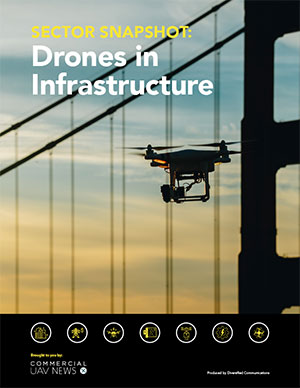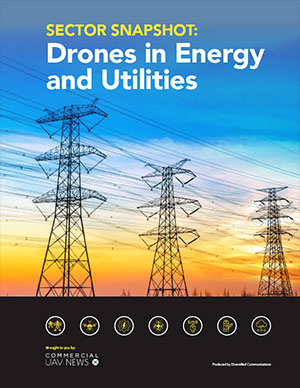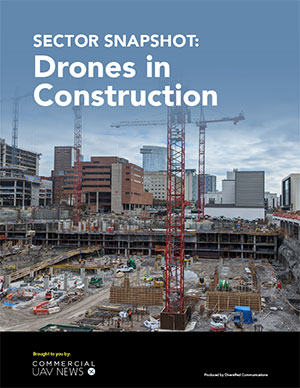Since the release of Part 107 in the summer of 2016, the uncrewed aviation industry has been asking the FAA to allow flights beyond the visual line of sight (BVLOS) of the operator. For years, operators accomplished these flights through waivers to Part 107, but we all knew it was inevitable that the regulation would one day allow longer and higher flights.
That day came just a few weeks ago, on August 7, when U.S. Secretary of Transportation Sean Duffy announced the publication of the Notice of Proposed Rulemaking (NPRM) for Part 108, the logical and straightforward sequel to Part 107.
Now, less than a month after this important publication, manufacturers, operators, the FAA, academia, NASA (National Aviation and Space Administration), and industry experts will have the opportunity to get together in the most important drone event of the year, Commercial UAV Expo, in Las Vegas from September 2 to 4.
For the ninth consecutive year, I’ll be making my annual pilgrimage to Las Vegas in search of answers to my questions and to participate in what has become my professional life. This year, I’m particularly excited about three aspects of this first industry gathering since the proposed Part 108 became public.
The 60-Day NPRM Comment Period
Secretary Duffy was clear that the public has 60 days to comment, and perhaps provide recommendations, to the FAA about the new proposed regulations. Many special interest groups and membership organizations are already combing through the 731-page document to see what new changes are proposed and what new allowances are made to allow remotely piloted aircraft (RPAs) to integrate with their onboard-piloted counterparts in the National Airspace System (NAS).
Commercial UAV Expo will be held exactly in the middle of this comment period, and I’m sure certain organizations will take the opportunity to get together and draft their initial comments on the new rule. It will also be a golden opportunity to hear directly from the FAA and gather information about the next steps and the tight timeline that the current administration has imposed on the Department of Transportation (DOT) and the FAA regarding a final ruling. According to the FAA, a final ruling will have to be ready in 240 days, or by February 6, 2026.

Previous regulations, such as Part 107 and MOSAIC (Modernization of Special Airworthiness Certification) for light sport aircraft (LSA) and sport pilots, took between 16 and 24 months from NPRM publication to new rule implementation, so recent past experiences do not paint a very optimistic picture about meeting a 240-day deadline.
Commercial UAV Expo will be a perfect opportunity for eager industry leaders to get together with those involved in the process to exchange ideas and prepare for the upcoming October 6 deadline.
Technological Advances in Line with Part 108
Now that Part 108 seems to be on the precipice of becoming reality, the industry must prepare for the challenges of integrating RPAs and passenger planes in the busy NAS. We all knew this day would come, and we all prepared in our way, but this time, Commercial UAV Expo will be different. This time, the rubber is about to hit the runway, and the industry needs to be ready.
Technologies such as Uncrewed Traffic Management (UTM) and Detect and Avoid (DAA) will have to prove they are ready for prime time and that safety protocols are in place to avoid incidents and accidents with crewed aviation.
NASA will play a key role in helping both the industry and the FAA navigate these safety protocols, especially around how we are going to make sure that current Air Traffic Control (ATC) is not burdened with the responsibility to maintain safe skies. There should be coordination, of course, but any system that adds one iota of work to the already stretched human controllers is doomed to fail, or worse, erode the current safety record.
Flying time will also be a hot topic at the conference. From the beginning, 25 minutes flying time was absurd, but was generally and begrudgingly accepted by an industry operating in Part 107. Now, however, operators will demand longer flying times, especially from U.S. manufacturers, which would allow them to expand into the BVLOS world with aircraft that can be used for any purpose, including but not limited to public safety, first responders, life-saving missions, deliveries, longer infrastructure inspectionsand , mapping larger areas.
The Business Side of Part 108
This will be the event where thought leaders, manufacturers, and operators will have to face the tough question about profitability and the long-term viability of the nascent industry. For over a decade, investors have been pouring money into this new form of aerial transportation under the assumption - and promise - that it would be the next big thing. For those of us who believe this to be true, this is the time to start talking about business models that are based on revenue generation rather than venture capital injection.
Commercial UAV Expo will be the perfect forum for companies and their partners to sit down and have a hard look at the reality of the new Part 108 era. Once we have a regulatory framework that allows companies to deploy their technology, there will be no more excuses, no more delays. It will be time to demonstrate that uncrewed aviation can generate the kind of revenue that would justify not only the hoopla, but also the billions of dollars that investors have entrusted in it.
Operators would have to get serious about implementing Safety Management Systems (SMS) to operate in Part 108 skies, and that, unfortunately, would add to overhead costs. Today, though, there are thousands of traditional crewed aviation companies around the world that operate successful and profitable businesses, such as passenger airlines, private charter operators, and national and international cargo, that thrive in this highly regulated industry.
There is no reason why uncrewed aviation should be different, even knowing that the scale of the business will be smaller, the volume of flights will certainly be higher, and the money involved will be nothing to sneeze at.
In conclusion, Commercial UAV Expo in Las Vegas next week will be a unique opportunity for anyone involved in this exciting industry to get together and debate the future of the technology and the viability of its deployment in a regulatory environment that is finally getting clearer.
See you all there!















Comments